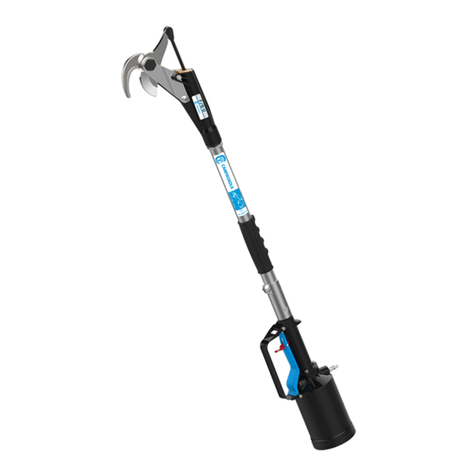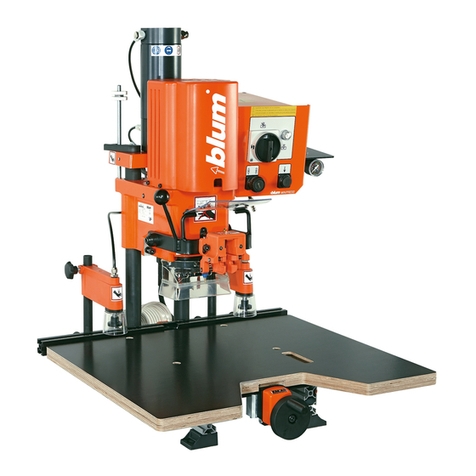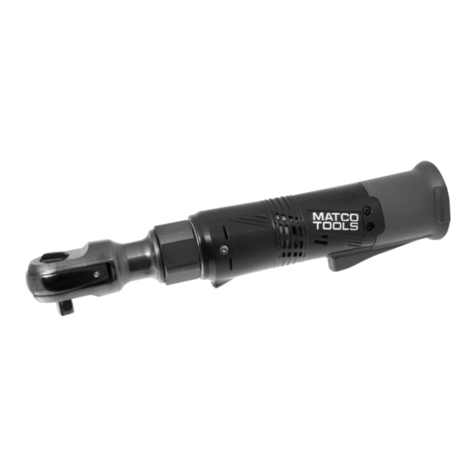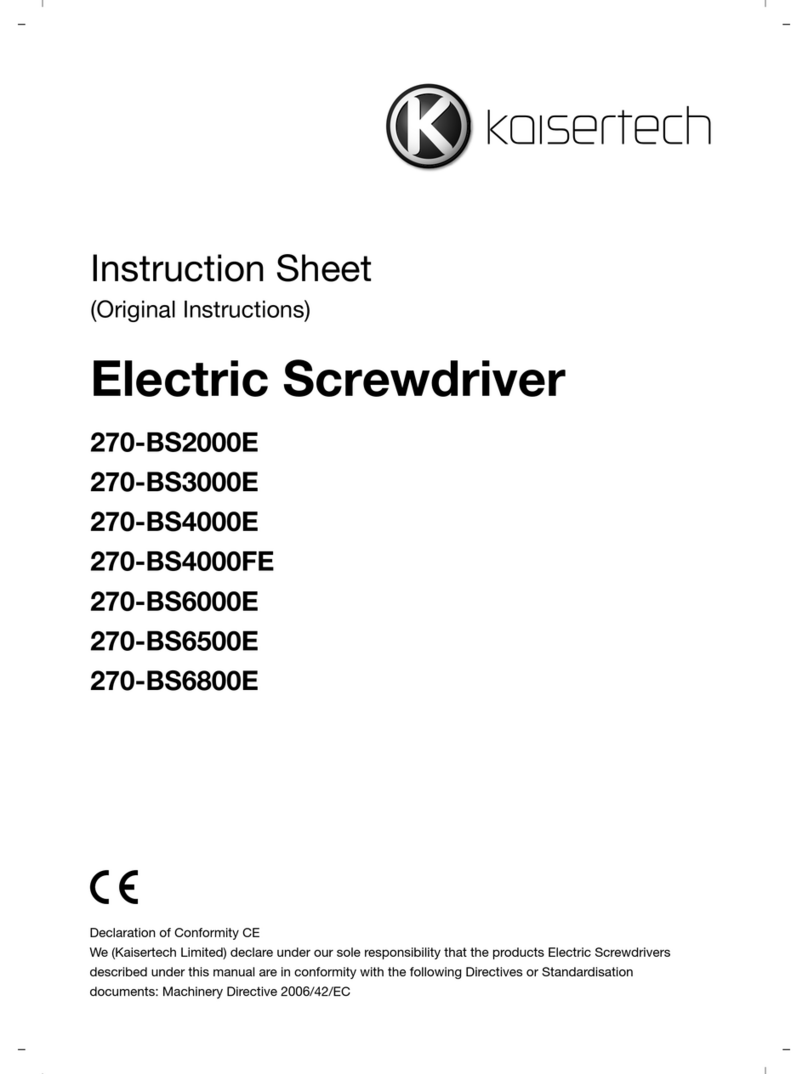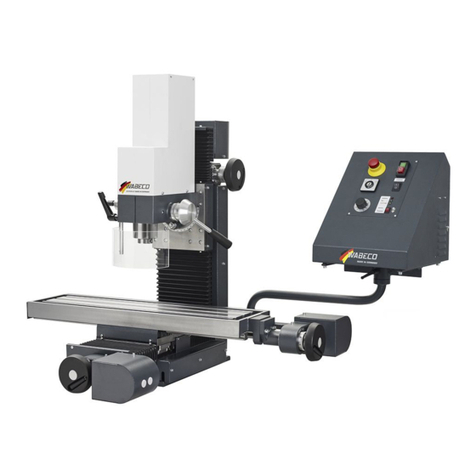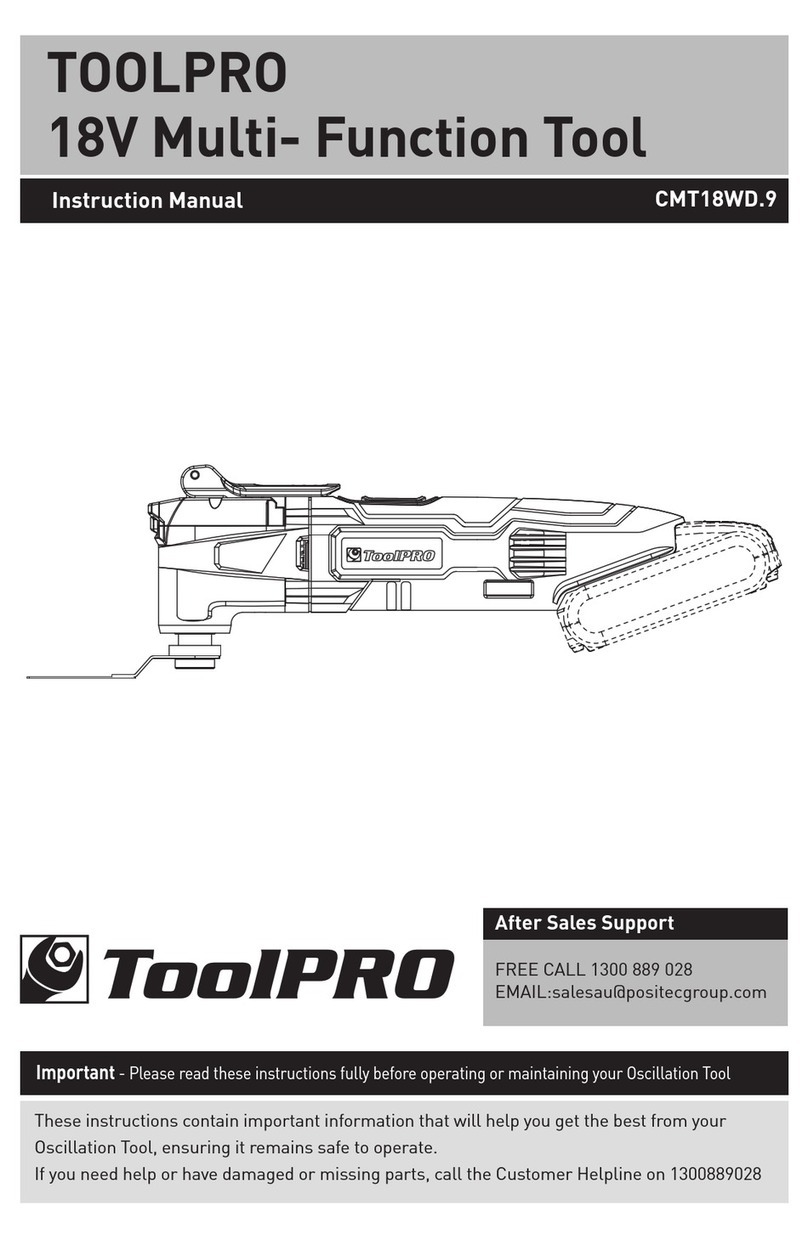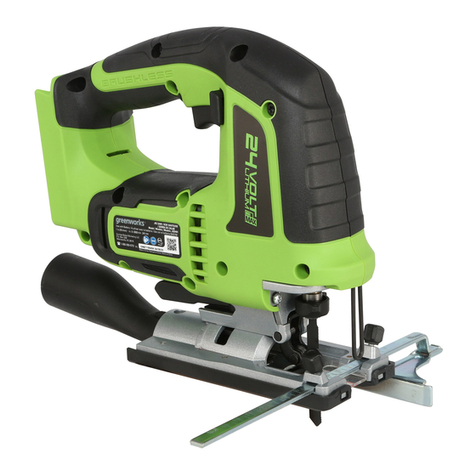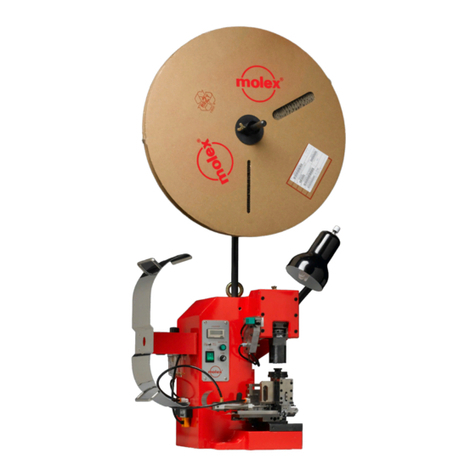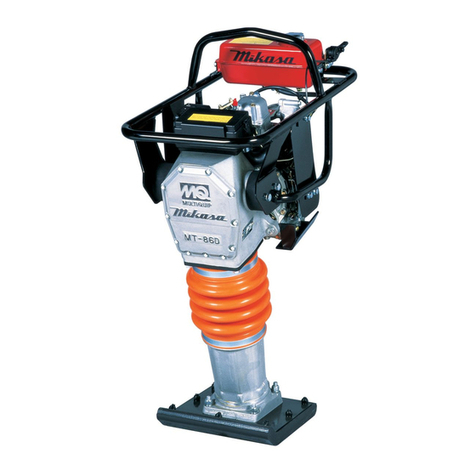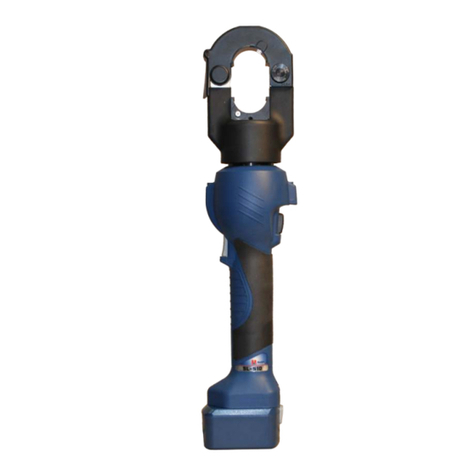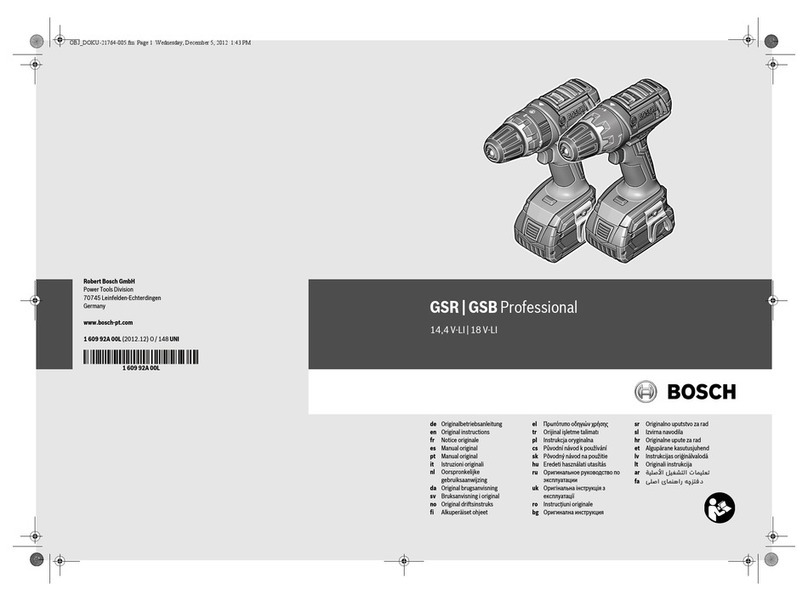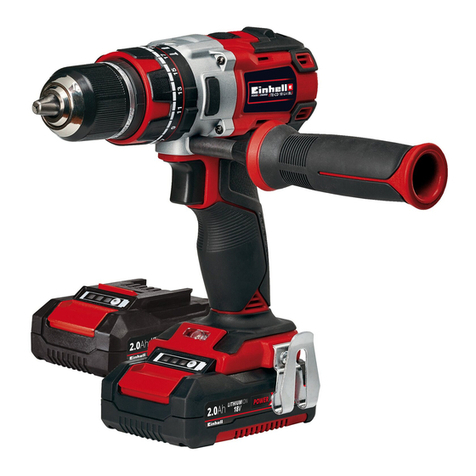TOP CAT TC-10 Instructions for use

General Operators Instructions
and
Maintenance Manual
TC-10, TC-20, TC-30 & TC-40
“B” Series Chipping Hammers
Top Cat ® Air Tools, Manufactured by T.C. Service Co.
38285 Pelton Road, Willoughby, OH 44094 U.S.A.
Ph: (440) 954-7500 or (800) 321-6876 ● Fax: (440) 954-7118 or (877) 800-3589
E-Mail: [email protected] ● Web Site: www.tcservice.com
Read Safety Recommendations Before Operating Tool
TC-30
Model
Number Tool Nose Bore and Stroke Blows per
Minute Weight Overall
Length
Body
Diameter
Working Air
Consumption
TC-10
0.580 Hex
or 0.680
Rnd
1.13 Inch x 1 Inch (29 mm x 25 mm) 2800 14.8 Lb. (5.6 Kg) 14.3 Inch (364 mm)
2.0 Inches
(51 mm)
25 cfm
(11.8 L/S)
TC-20 1.13 Inch x 2 Inch (29 mm x 51 mm) 2400 15.4 Lb. (6.1 Kg) 15.9 Inch (404 mm)
TC-30 1.13 Inch x 3 Inch (29 mm x 76 mm) 1900 16.7 Lb. (6.6 Kg) 17.6 Inch (448 mm)
TC-40 1.13 Inch x 4 Inch (29 mm x 102 mm) 1500 17.2 Lb. (7.0 Kg) 18.9 Inch (480 mm)
TC-10B, TC-20B, TC-30B & TC-40B Series Scalers

This is meant to highlight sections of safety standards published by the American National Standards
Institute and the Occupational Safety and Health Administration. This is not meant to replace those
standards but only highlight certain areas.
When care is taken to ensure that the right tool is operated properly, and safety and maintenance
procedures are followed, accidents can be avoided. Read and follow all instructions and directions.
Comply with all rules governing the use of power tools, personal protective equipment and equipment
guards.
Remember - machines, attachments and accessories must be used only for the purpose for which
they were designed. Safety reasons and product liability prohibit any modifications to tools. Any
attachments or accessories must be agreed to in advance with an authorized technical representative
of T.C. Service Co.
Operators Instructions and Safety Precautions
Always wear eye and hearing protection, and when necessary, other
personal protective equipment such as gloves, an apron, and helmet.
Properly fitted protective clothing cushion the operator from vibration
exposure and help prevent minor scrapes that might occur as a result of
guiding the tool along the work piece.
Additional information on eye protection is available in the following
national regulatory standards.
1) Federal OSHA Regulations 29 CFR, Section 1910.133 (Eye and Face
Protection)
2) ANSI Z87.1 (Occupational and Educational Eye and Face Protection)
Check hose size and air pressure. The air pressure at the tool shall not exceed 90 psi (6.2 bar). All
hoses should be inspected regularly and kept away from heat, oil and sharp edges. Be sure the tool
is secured to the air hose.
Proper mounting of inserted tooling is crucial to safe operation and efficient working conditions.
Ensure the exhaust air is directed away from bystanders.
Disconnect the tool from the air supply before doing any service.
This prevents accidental start-ups. Never start the tool with the
chisel or needles pointed at yourself or another person.
Airborne particulate resulting from the metal
removal process can cause hazards. Wear
appropriate protective equipment.

The safety procedures for operating air tools are everyone’s responsibility. The following lists several
aspects of air tool safety that should be considered during operation. Please be aware of the these
aspects and report any unsafe practice you see to a supervisor or safety officer immediately.
1) The inserted tool on heavy types of percussive, non-rotary power tools is exposed to heavy strains
and can, after long period of use, break due to fatigue.
2) Unexpected tool movement or breakage of inserted tool may cause injuries to the lower limbs, in
particular the feet.
3) Unsuitable postures may not allow counteracting of normal or unexpected movement of the power
tool. (A working position shall be adopted which remains stable in the event of a break up of the
inserted tool.)
4) Support the work piece properly.
5) Holding the inserted tool by the free hand can be a source of vibration damage.
6) If the tool jams, shut off the power and ease the chisel free. (Check the chisel for damage before
continuing operation.)
7) Ensure that sparks from the process do not create a hazard to eyes or will ignite the environment.
8) Percussive tools shall not be used in potentially explosive atmospheres.
9) Pneumatically driven tools are not generally insulated from coming into contact with electric
sources. Be sure to avoid contact with wires or other possible current carrying sources.
10) The operator must check that no bystanders are in the vicinity.
11) Disconnect the power supply before servicing and changing of inserted tooling.
12) Release control device in case of interruption of energy supply.
13) Always keep the tool in a clean, dry place when not in use.
14) Do not hold tool near body when operating.
15) Keep a firm grip on tool during operation.
16) Do not chisel toward your body.
17) If a quick disconnect hose fitting is used, insert a whip hose between coupling and the tool.
18) Never carry a tool by the hose.
19) Never yank the hose to disconnect it from the air supply.
20) Keep hoses away from heat, oil, sharp edges and in good repair - inspect regularly.
21) Check to see that tool is securely fastened to air hose.
22) In air hoses larger than ½ inch, a safety excess flow valve must be installed at the source of the
air supply to reduce pressure in case of hose failure.
23) Before operating the tool, see that the retainer is installed and working to prevent attachments
such as chisels, or other implements from being ejected from the tool when operated. Because
these retaining devices receive substantial abuse and wear, they should be inspected regularly and
replaced when damage or wear is noted.
24) Never leave a tool attached to supplied air unattended. Avoid accidental actuation.
25) Always disconnect the tool from the air supply or shut off and drain the air hose prior to changing
chisels, or other implements.
26) Never point or direct a tool toward another worker or yourself.
27) When working in close proximity to other workers, suitable barriers may need to be erected
around work areas to protect workers from possible tool ejections or flying pieces from the removal
process itself.
28) Be sure to wear the properly fitted personal protective equipment required to guard against
operator injury.
29) Stay alert. Do not use the tool while under the influence of alcohol, drugs or medication.
Safety in Operation

Maintenance
Disassembly
1. Disconnect air supply and remove all accessories. Remove retaining spring (2428)
and retainer (2427).
2. Position tool in vise horizontally. Clamp onto the sides of handle (2465).
3. Remove the flat spring exhaust deflector (2416) using expanding pliers.
4. Remove the two half moon exhaust deflector support rings (2417).
5. Remove the lock collar (2415). A small hammer and a punch may be required.
Remove from vise
6. Clamp the barrel assembly in the vise vertically with the front of tool down. Clamp
onto the flats on the front of the barrel (2423-2426).
7. Unscrew and remove handle (2465) using a large wrench.
8. Lift off the main valve assembly (includes upper valve block (2430), valve (2432),
valve spacer (2431), lower valve block (2429) and pins (2433)). Remove from vise.
9. Turn barrel so the nose is up. The piston (2420-2422) should slide out of the rear
end. Measure the large diameter of the piston at the center and each end. When

this difference becomes 0.0015 inches or more, then the efficiency of the rammer is
reduced to the point where one should replace the piston.
10. To check the throttle valve, clamp the handle assembly into the vise. Clamp onto
the sides to the handle. Unscrew and remove the throttle valve cap (2459). Remove
the spring (2458), and throttle valve (2456). Replace o-ring (594018) if cracked or torn.
11. The chisel bushing (2418 or 2419) requires a hydraulic press and special tools to
remove and install. Please feel free to return the tool to our Ohio facility to replace this
part.
Assembly
1. Be sure all parts are clean and free of any abrasive.
2. Clamp the barrel assembly in the vise vertically with the front of tool down. Clamp
onto the flats on the front of the barrel (2423-2426).
3. Slide the piston (2420-2422) into the cylinder bore, (tapered side of piston goes
toward front of tool).
4. Place dowel pins (2433) into the blind holes at the end of the cylinder. (The blind
holes are those that are parallel to the axis of the part. The pins should bottom with a
shoulder in the bottom of the holes.)
5. Slip lower valve block (2429) over pins. (Be sure not to block the ports.)
6. Place the valve spacer (2431) over pins. (Be sure not to block the ports.)
7. Drop a valve (2432) into slot in valve spacer. Apply a few drops of light oil to valve.
8. Slide upper valve block (2430) over pins. (Be sure to align the port holes.)
9. Place filter screen (1350-312) onto top of upper valve block, centered on the block.
9. Screw on handle assembly by hand. Tighten handle using a large wrench.
10. Position tool in vise horizontally. Clamp onto the sides of handle (2465)
11. Slide lock ring (2415) over front of tool and mesh teeth with handle. (Turning the
ring until you find a position where the teeth mesh fully.)
12. Place split rings (2417) next to shoulder opposite lock ring.
13. Expand exhaust deflector (2416) and slide into position between lock ring and split
rings.
14. Install retainer (2427). Install retaining spring (2428) fully into slot of retainer.
Note: Use of any parts other then
genuine Top Cat® parts voids any
and all warranties, and may result
in a hazardous situation and a
decrease in operating efficiency.

Tool Parts Listing
PART NUMBER DESCRIPTION
1350-312 SCREEN
2415 HANDLE LOCK RING
2416 EXHAUST DEFLECTOR
2417 LOCK RING PAIR
2418 CHISEL BUSHING .580 HEX
2419 CHISEL BUSHING .680 ROUND
2420 TC-10 PISTON
2421 TC-20 PISTON
2421-A TC-30 PISTON
2422 TC-40 PISTON
2423 TC-10 CYLINDER
2424 TC-20 CYLINDER
2425 TC-30 CYLINDER
2426 TC-40 CYLINDER
2427 SAFETY RETAINER
2428 RETAINER SPRING
2429 VALVE SEAT
2430 UPPER VALVE BLOCK
2434 INLET BUSHING
2431 VALVE SPACER
2432 VALVE
2433 ALIGNMENT PIN (2 REQ.)
2451 TRIGGER
2453 PUSH ROD
2454 TRIGGER PIN
2456 THROTTLE VALVE INC. 594108
2458 THROTTLE VALVE SPRING
2459 THROTTLE PLUG
2465 CHIPPING HAMMER HANDLE
2467 THROTTLE VALVE HOUSING
594016 O-RING
594108 O-RING
594116 O-RING
841552 3/8 NPT TO 3/8 NPT BUSHING
841553-M 3/8 NPT TO 3/8 BSP BUSHING
ACCESSORIES
PART NUMBER DESCRIPTION
1080 SWIVEL HOSE CONNECTOR
2427-R ROUND SAFETY RETAINER
3400-17 QUICK CHANGE RETAINER
ASSEMBLIES
PART NUMBER DESCRIPTION
AA-2423;HEX TC-10 CYLINDER ASSY.
W/ HEX NOSE
AA-2423;RND TC-10 CYLINDER ASSY.
W/ ROUND NOSE
AA-2424;HEX TC-20 CYLINDER ASSY.
W/ HEX NOSE
AA-2424;RND TC-20 CYLINDER ASSY.
W/ ROUND NOSE
AA-2425;HEX TC-30 CYLINDER ASSY.
W/ HEX NOSE
AA-2425;RND TC-30 CYLINDER ASSY.
W/ ROUND NOSE
AA-2426;HEX TC-40 CYLINDER ASSY.
W/ HEX NOSE
AA-2426;RND TC-40 CYLINDER ASSY.
W/ ROUND NOSE
AA-2465 COMPLETE HANDLE ASSY.
CHISELS-.580 HEX SHANK
PART NUMBER DESCRIPTION
839008 FLAT 1" WIDE X 9" LONG
839009 FLAT 1" WIDE X 12" LONG
839010 FLAT 1" WIDE X 18" LONG
839016 FLAT 2" WIDE X 12" LONG
839018 MOIL POINT X 9" LONG
OTHER SIZES & STYLES AVAILABLE
CHISELS-.680 ROUND SHANK
PART NUMBER DESCRIPTION
839014 FLAT 1" WIDE X 9" LONG
839017 FLAT 2" WIDE X 12" LONG
839019 FLAT 1-1/2" WIDE X
12" LONG
839023 MOIL POINT X 9" LONG
839045 FLAT 1" WIDE X 18" LONG
839083 FLAT 1" WIDE X 12" LONG
OTHER SIZES & STYLES AVAILABLE

The following suggestions will help reduce or moderate the effects
of repetitive work motion and/or extended vibration exposure:
1) Do not over-grip the machine/tool. Use only the force required to
maintain control.
2) Keep hands and body dry and warm. (Blood flow is important -
exercise hands and arms as often as necessary.)
3) Keep wrists as straight as possible. (Avoid hand positions that
require the wrist to be flexed, hyper extended or turned side-to-
side.)
4) Avoid anything that may inhibit blood circulation such as smoking
tobacco or cold temperatures.
5) Do not support body-weight on the tool during operation.
6) Maintain a stress-free posture for the entire body.
Prolonged exposure to vibrations created by vibrating sources may
cause health hazards. There are gloves, handle wraps and other
forms of protective measures available to help reduce the hazard.
The fit and condition of any vibration abatement measure must be
monitored.
Ergonomics - Work Healthy
ASSEMBLIES
PART NUMBER DESCRIPTION
AA-2423;HEX TC-10 CYLINDER ASSY.
W/ HEX NOSE
AA-2423;RND TC-10 CYLINDER ASSY.
W/ ROUND NOSE
AA-2424;HEX TC-20 CYLINDER ASSY.
W/ HEX NOSE
AA-2424;RND TC-20 CYLINDER ASSY.
W/ ROUND NOSE
AA-2425;HEX TC-30 CYLINDER ASSY.
W/ HEX NOSE
AA-2425;RND TC-30 CYLINDER ASSY.
W/ ROUND NOSE
AA-2426;HEX TC-40 CYLINDER ASSY.
W/ HEX NOSE
AA-2426;RND TC-40 CYLINDER ASSY.
W/ ROUND NOSE
AA-2465 COMPLETE HANDLE ASSY.
CHISELS-.580 HEX SHANK
PART NUMBER DESCRIPTION
839008 FLAT 1" WIDE X 9" LONG
839009 FLAT 1" WIDE X 12" LONG
839010 FLAT 1" WIDE X 18" LONG
839016 FLAT 2" WIDE X 12" LONG
839018 MOIL POINT X 9" LONG
OTHER SIZES & STYLES AVAILABLE
CHISELS-.680 ROUND SHANK
PART NUMBER DESCRIPTION
839014 FLAT 1" WIDE X 9" LONG
839017 FLAT 2" WIDE X 12" LONG
839019 FLAT 1-1/2" WIDE X
12" LONG
839023 MOIL POINT X 9" LONG
839045 FLAT 1" WIDE X 18" LONG
839083 FLAT 1" WIDE X 12" LONG
OTHER SIZES & STYLES AVAILABLE

Following the guidelines will help you to ensure the pneumatic tools your company
uses are operating and are maintained in the very best of condition.
Initial Inspection of a New Tool
When a new tool is delivered to your facility, it is important to inspect the tool for any
signs of damage that may have occurred during shipping. Here is a list of things to
inspect:
● With the tool disconnected from the air supply, depress the throttle lever or trigger.
The device should move freely and not become caught.
● Inspect the fit of the inserted tooling into the tool. The inserted tooling should fit
properly into the front of the tool. It should move freely during installation and be fully
retained when the retainer is completely installed.
Plumbing Installation
The tool must have fittings and connectors installed into the air inlet in order to
connect with your companies air system. Your choice of fittings can greatly affect the
performance of the tool.
Fitting Size
The size of the air inlet of the tool is the minimum size of fitting that will allow for proper
airflow into the tool. Should a smaller fitting size be used such as reducers or adapters,
this will constrict the airflow into the tool and reduce the overall performance.
Coupling Size and Installation
The coupling size should be equal to or larger than the inlet size of the tool. If a smaller
size coupling is used then the air supply volume may be reduced which may lead to
reduced performance from the tool.
The coupling should be installed near to the tool. It is important that the tool receive
internal lubrication on a regular basis. Having the connection closer to the tool will
promote regular lubrication, as the connection is easily accessible. Hose whips are
often used between the tool and the coupling.
Use thread sealant on all pipe threads and ensure a tight fit.
Operation Test
After your initial inspection and installation of the plumbing connections, it is important
to test for proper operation. Percussive tools for use with chisels will not function
properly without an inserted tool driver installed. Install a chisel tool into the front of
the percussive tool and employ the safety retainer. Insure that the retainer spring is
fully and correctly installed into the safety retainer before operating the tool. Support
the inserted tool against a test plate and turn on the tool. The tool should begin a
regular series of impacts. Run of a short time to ensure proper operation.
Installation and Maintenance Tips

Mounting Inserted Tooling
The mounting of the inserted tooling used with the tool is very important to ensure
safety for the operator and proper functioning of the tool. The following diagram briefly
describe the methods and equipment for mounting most inserted tooling.
TC-10, TC-20, TC-30 & TC-40 Series
Chipping Hammers
Removal of Chisel
1 - Grasp the retaining
spring (2428) and pull
from groove.
2 - Slide out safety
retainer (2427) and
chisel from front of tool.
Installation of Chisel
1 - Slide the chisel into the rear
of the safety retainer (2427).
Be sure the oval collar of the
chisel falls into the oval notch
in the retainer that does not go
all the way through.
2 - Slide the chisel and safety
retainer onto the front of the
tool. The retaining spring slot
on the safety retainer should
align with the groove of the
barrel.
3. Slide the retaining spring
(2428) into the slot of the
safety retainer.

Ensure Proper Pressure, Filtration & Lubrication
Properly lubricated pneumatic tools work better, last longer between maintenance
intervals and are safer in general use. The maintenance costs are reduced dramatically
when a little time is taken to regularly lubricate the tools. There are several ways to
ensure proper lubrication.
1) Filters, Regulators & Lubricators
These devices should be installed in the air system at each work station and inspected
regularly to ensure proper operation. Each device in this set performs a vital task that
greatly affects the performance of the tool and overall longevity of the component
parts.
Filters
A filter is a device used to trap/contain particulate and liquid contaminants in the
compressed air system. They generally have a cartridge or screen that requires
cleaning or replacement regularly. Without this maintenance, the filtering device can
become clogged and reduce the flow of air to the tool. A loss in performance can result.
Regulators
A regulator adjusts the operating pressure supplied to the tool. This device generally is
used with a pressure gauge that will indicate the current pressure setting. All Top Cat
® pneumatic tools are designed to operate at 90 PSI (6.2 bar) while the tool is running.
The tool should never be run if the pressure should exceed 90 PSI (6.2 bar).
Lubricators
Lubricators are devices that induce a controlled amount of oil into the air supply for
pneumatically driven tools. They generally contain a reservoir that one must keep filled
with oil. A light grade oil such as Mobil DTE light or equivalent is recommended. There
is a variable setting on the lubricator that will determine the amount of oil induced into
the air supply. Lubricators should be adjusted to add one to two drops of oil per minute.
It is important to inspect both the setting and amount of oil in the lubricator regularly to
determine proper functioning of the device. The lack of oil in the air system will greatly
reduce the performance and longevity of the pneumatically driven tool.
2) Direct injection of oil into the tool
A simple and easy way to ensure proper lubrication is to inject the oil directly into the
tool air inlet. This should be performed prior to storage of the tool. To perform this task
one must have a small container of the proper lubricating oil.
● Disconnect the tool from the air supply at the air coupling.
● Place a few drops of oil from the container into the air inlet of the tool directly.
● Reconnect the tool to the air supply.

● Direct the exhaust of the tool away from any bystanders or cover the exhaust with a
shop rag.
● Run the tool until the oil has completely passed through the unit.
The best lubrication techniques include both methods.
What Conditions Indicate the Need for Maintenance?
Pneumatic tools will exhibit several distinct signs that maintenance is required. Higher
costs can be avoided if maintenance is performed when the first signs are evident. The
following list details conditions that may indicate the necessity for service.
1) A reduction in power may indicate the necessity for maintenance.
2) Should the tool not maintain a uniform operating frequency, servicing may be
required.
The Common Wear Items
The Piston. Measure the large diameter of the piston at the center and each end.
When this difference becomes 0.0015 inches or more, then the efficiency of the
chipping hammer is reduced to the point where one should replace the piston.
This covers all of the predictable wear that can occur within the tool. Other factors due
to environment, level of treatment/care and air supply quality can cause other forms of
wear that are unpredictable.
For More Information
1) General Industry Safety & Health Regulations 29 CFR, Part 1910 and where
applicable Construction Industry Safety & Health Regulations 29 CFR, Part 1926
available from Superintendent of Documents, Gov’t. Printing Office, Washington, D.C.
20402.
2) Safety Code For Portable Air Tools, ANSI B186.1, B7.1 and Z87.1, available from
American National Standards Institute, Inc. 1430 Broadway, New York, NY 10018

© Copyright 2005
All Rights Reserved
T.C. Service Co.
38285 Pelton Rd.
Willoughby, OH 44094
U.S.A.
Ph: 440-954-7500
Fax: 440-954-7118
• Vertical Grinders
• Horizontal Grinders
• Right Angle Grinders
• Die Grinders
• Extended Grinders
• Bench Grinders
Grinders
• Vertical Polishers
• Horizontal Polishers
• Right Angle Polishers
Polishers
• Scalers
• Needle Scalers
• Chipping Hammers
• Rammers
Percussion Tools
Saws
Air Motors
Drills
This manual suits for next models
3
Table of contents



